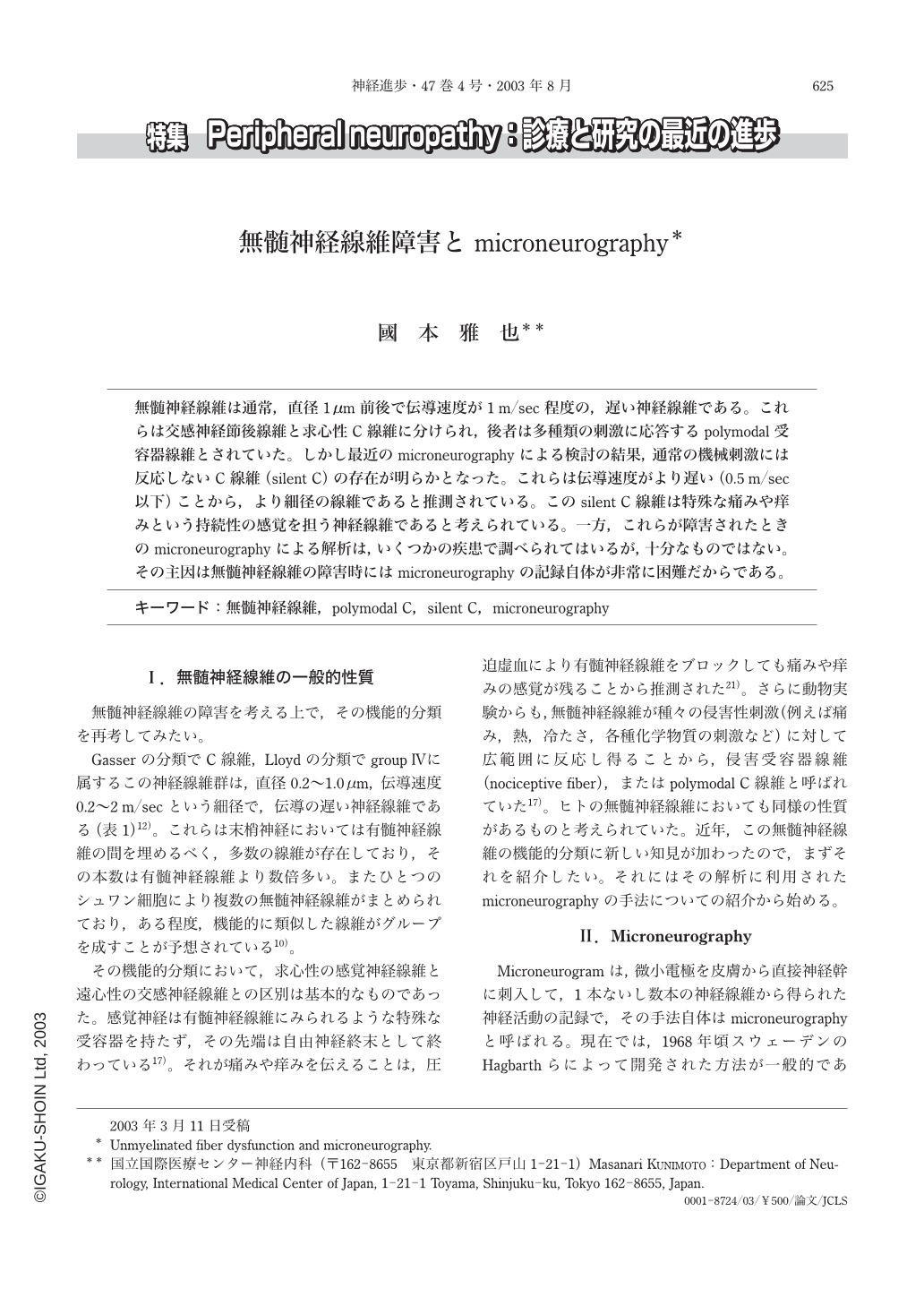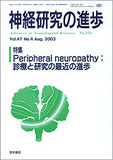Japanese
English
- 有料閲覧
- Abstract 文献概要
- 1ページ目 Look Inside
無髄神経線維は通常,直径1μm前後で伝導速度が1m/sec程度の,遅い神経線維である。これらは交感神経節後線維と求心性C線維に分けられ,後者は多種類の刺激に応答するpolymodal受容器線維とされていた。しかし最近のmicroneurographyによる検討の結果,通常の機械刺激には反応しないC線維(silent C)の存在が明らかとなった。これらは伝導速度がより遅い(0.5m/sec以下)ことから,より細径の線維であると推測されている。このsilent C線維は特殊な痛みや痒みという持続性の感覚を担う神経線維であると考えられている。一方,これらが障害されたときのmicroneurographyによる解析は,いくつかの疾患で調べられてはいるが,十分なものではない。その主因は無髄神経線維の障害時にはmicroneurographyの記録自体が非常に困難だからである。
Unmyelinated fibers are classified to C fibers by Gasser. They have small diameter(0.2-1.0μm)and slow conduction velocity(0.2-2.0m/sec). They are functionally divided into two groups. Ones are efferent sympathetic postganglionic and the others are afferent polymodal C fibers. The afferent fibers are further classified to responsive and non-responsive fibers to mechanical stimulation. Using the technique of microneurography, each afferent C fiber can be analyzed whether it responds to various stimulation. The recent data from microneurographical research have disclosed that the silent C fibers are responsible for itching, burning pain induced by capsaicin, deep pain from muscle. These fibers are thinner and slower(less than 0.5m/sec)than most of the conventional C fibers. It seems that these non-responsive C fibers to mechanical stimulation are related to long-standing sensations like deep pain or itching.
The recording of C fibers activity are very difficult in their damaged state by microneurography. Only some reports about diabetic neuropathy, reflex sympathetic dystrophy, pure autonomic failure, multiple system atrophy, Fabry disease have been seen in the literature. The loss of unmyelinated fibers are the main reason for the pathological process and it makes difficult to take good recording by microneurography. The technique seems to be also useful to analyse ephaptic transmission as a mechanism of dysesthesia and abnormal sensation.

Copyright © 2003, Igaku-Shoin Ltd. All rights reserved.


